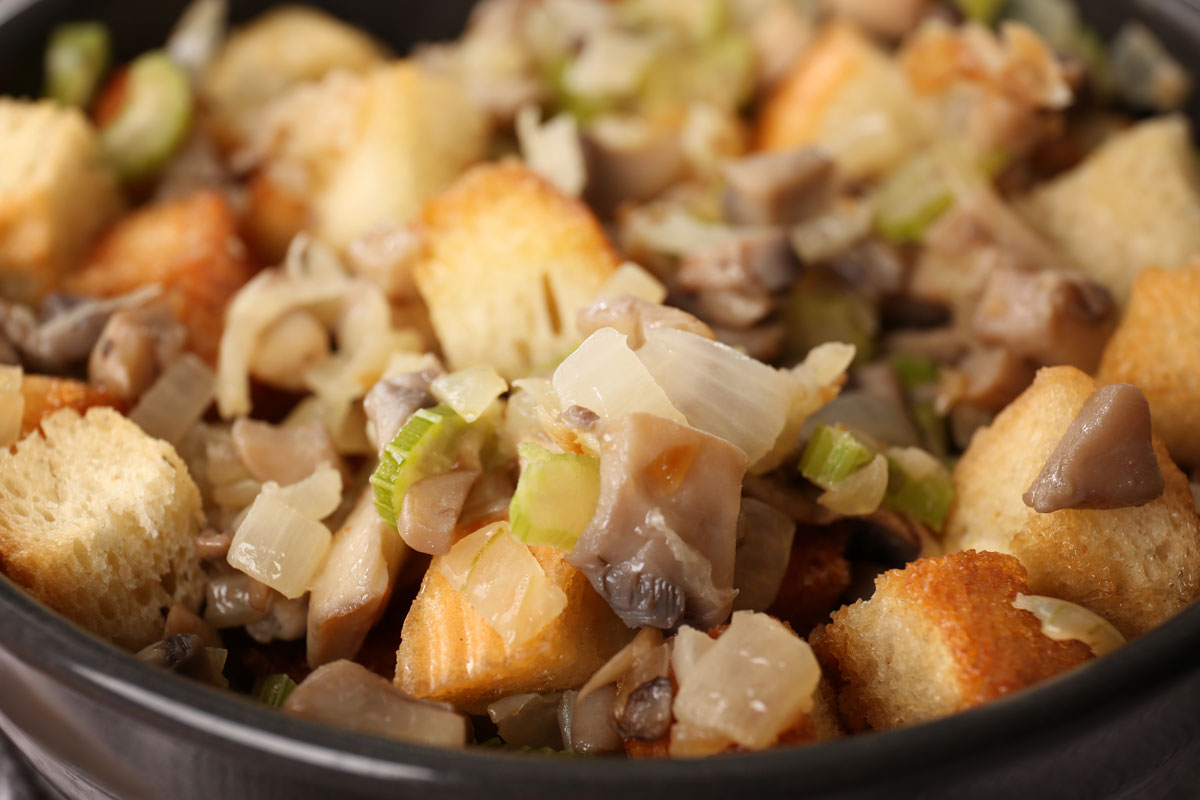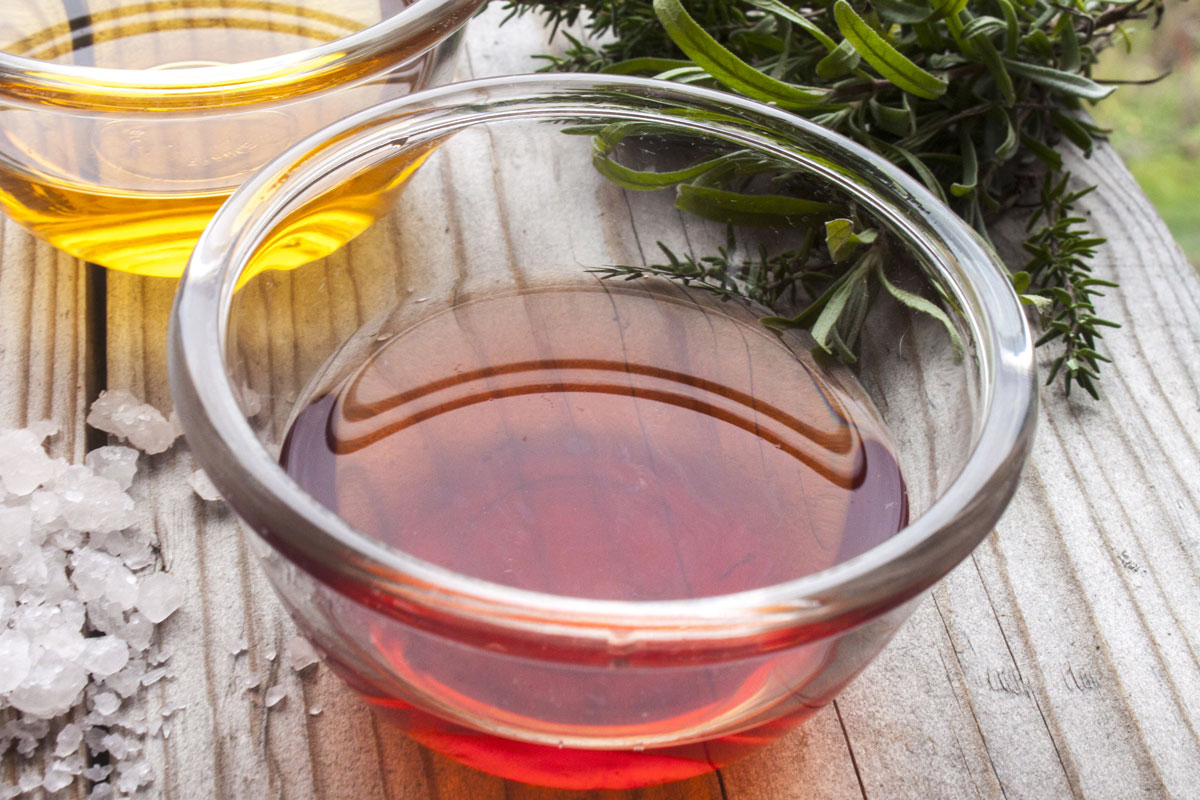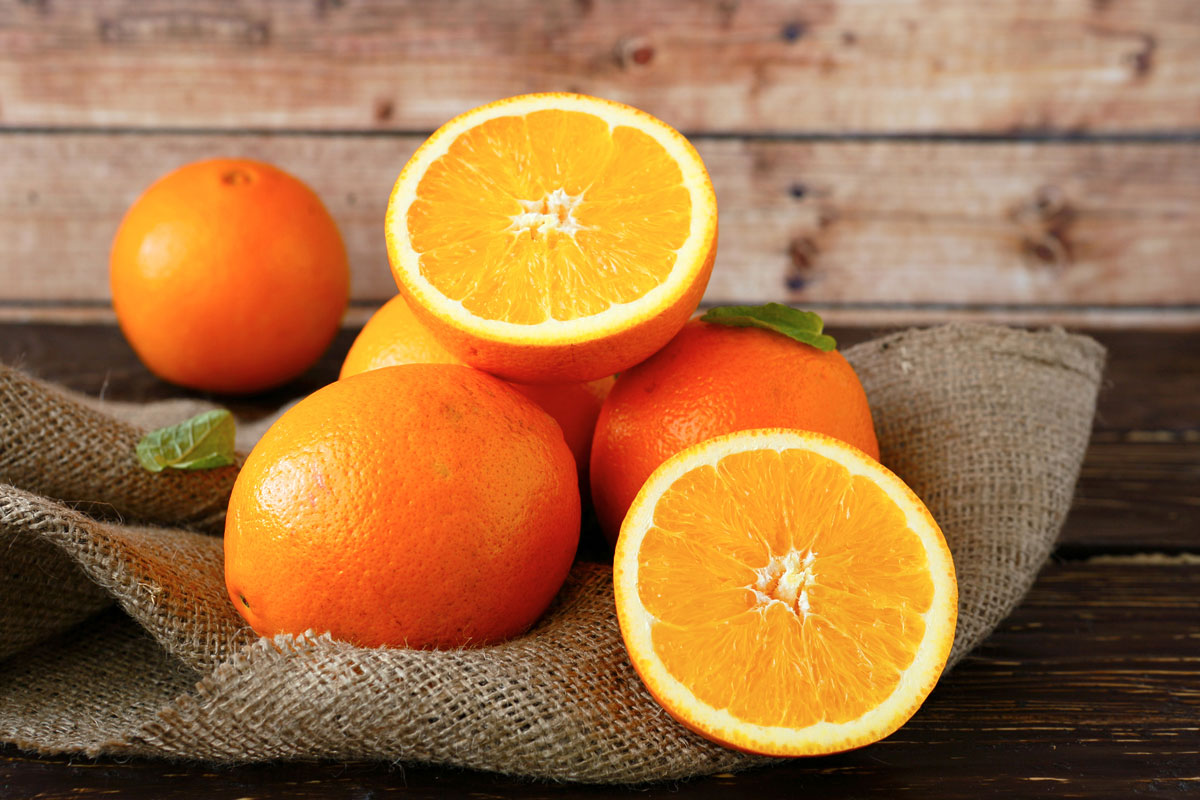The blend of sweet and hot sausage means a taste explosion in every bite. (Of course, if you prefer your stuffing to be on the milder side, you can use 2 pounds of sweet sausage only.) Though we still call it “stuffing,” the safest and tastiest way to bake it is in its own dish—you’ll get the crispy top that everyone loves over the greatest surface area too.
Ingredients
- 4 tablespoons extra virgin olive oil, plus more for the baking pan
- 2 large onions, peeled and diced
- 3 stalks celery, trimmed and sliced thin (leaves are OK)
- 1 pound mushrooms, thickly sliced
- 1 pound each, sweet and hot sausage
- ½ cup pine nuts
- ½ teaspoon dried thyme or the leaves of a sprig of fresh thyme
- ½ cup sweet vermouth
- 1 French baguette or crusty Italian bread, cut into small cubes
- 3 to 4 cups chicken stock, preferably homemade
- 3 large eggs, beaten
- 8 tablespoons salted butter, cut into half-inch cubes
Directions
Step 1
Heat a large skillet over medium-high heat. When the pan is hot, add the oil and then the onions and celery, sautéing the vegetables until soft. Push them to the outer rim of the pan, and sauté the mushrooms in batches to avoid crowding them. Next add the sausage, breaking it up into small pieces as it cooks. Continue cooking the meat until no pink is visible. Add the pine nuts and thyme, and cook for another minute. Pour in the vermouth, stir, and cook for another minute or two, loosening any bits on the bottom of the pan.
Step 2
Place the bread cubes in a very large mixing bowl, and fold in the sausage and vegetable mixture. Moisten with the broth, adding one cup at a time—the mixture should be very wet but not runny. Fold in the eggs.
Step 3
Grease a deep 13″ by 9″ baking pan with olive oil, and pour the stuffing mixture into the pan, leaving about 1″ clearance from the top—it will bubble up as it bakes. (Use two baking dishes if necessary.) Dot the surface of the stuffing with the butter cubes, and cover with foil, making a fairly tight seal. Bake at 350 degrees for 90 minutes, taking the foil off for the last 15 minutes to brown the top, if needed. The stuffing will keep warm out of the oven with the foil back in place for up to an hour.




